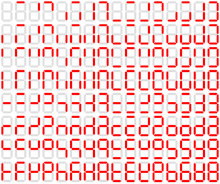In computing
- 128-bit key size encryption for secure communications over the Internet

- A 128-bit integer can represent up to 3.40282366...e+38 values (2128= 340,282,366,920,938,463,463,374,607,431,768,211,456).
- CAST-128 is a block cipher used in a number of products, notably as the default cipher in some versions of GPG and PGP.